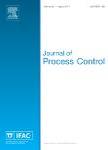版权所有:内蒙古大学图书馆 技术提供:维普资讯• 智图
内蒙古自治区呼和浩特市赛罕区大学西街235号 邮编: 010021

作者机构:Ohio State Univ Dept Mech & Aerosp Engn Columbus OH 43210 USA
出 版 物:《JOURNAL OF PROCESS CONTROL》 (工艺过程控制杂志)
年 卷 期:2016年第40卷
页 面:78-92页
核心收录:
学科分类:0711[理学-系统科学] 07[理学] 0817[工学-化学工程与技术] 08[工学] 070105[理学-运筹学与控制论] 081101[工学-控制理论与控制工程] 0811[工学-控制科学与工程] 0701[理学-数学] 071101[理学-系统理论]
主 题:Selective catalytic reduction system Ammonia coverage ratio reference Nonlinear model predictive control Robustness Diesel emissions control
摘 要:The demands of high NOx conversion efficiency and low tailpipe ammonia slip for urea-based selective catalytic reduction (SCR) systems have been substantially increased in the past decade, as NOx emission legislations for Diesel engines are becoming more stringent than ever before. Since catalyst aging has a significant impact on SCR performance, robust and adaptive SCR control has been preferred for degraded SCR systems to realize emission control objectives. The purpose of this paper is twofold. Firstly, a robust ammonia coverage ratio observer was designed for estimating the ammonia coverage ratio reference for catalysts with different aging levels. An ammonia storage capacity observer was developed for estimating the actual ammonia storage capacity which can be reduced due to catalyst aging. An adaptive ammonia coverage ratio reference design was then developed to estimate the desired ammonia coverage ratio ranges at each instantaneous engine operating point for both single-cell and two-cell SCR systems at different aging levels based on a singular perturbation method. Secondly, to ensure the estimated ammonia coverage ratio falls in the desired ranges for most of engine operating conditions, robust nonlinear model predictive control (NMPC) algorithms were designed for both single-cell and two-cell SCR systems. Experimental data over US06 cycle were collected from a Diesel engine and aftertreatment system platform for controller verification. Simulation results under US06 test cycle demonstrate that the proposed NMPC algorithms were capable of consistently achieving high NO,, conversion efficiency (95.6%) and constrained tailpipe ammonia slip (10 ppm on average and 12 ppm on the peak) for both fresh catalyst and aged catalyst with 30% loss of ammonia storage capacity. (C) 2016 Elsevier Ltd. All rights reserved.